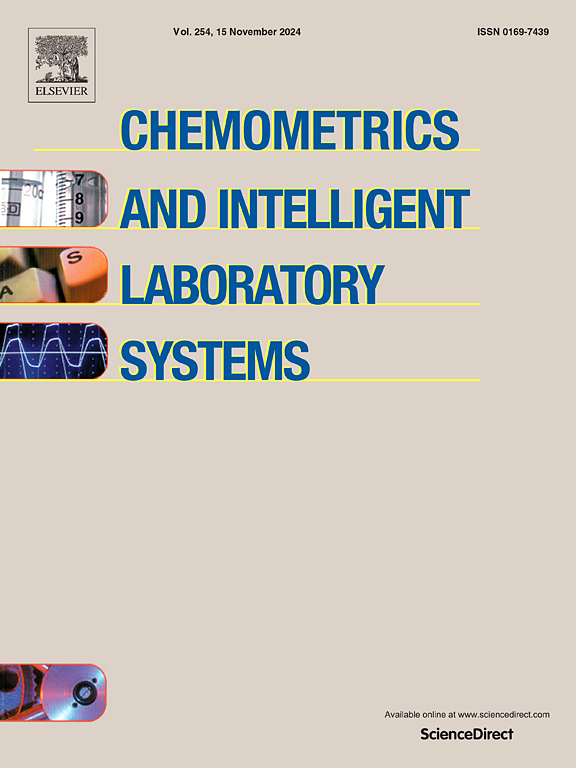基于异构集成学习模型的全谱LIBS定量分析
IF 3.7
2区 化学
Q2 AUTOMATION & CONTROL SYSTEMS
Chemometrics and Intelligent Laboratory Systems
Pub Date : 2025-01-13
DOI:10.1016/j.chemolab.2025.105321
引用次数: 0
摘要
激光诱导击穿光谱(LIBS)技术广泛应用于分析化学、材料科学和环境监测等领域。建立组分含量与光谱数据之间的定量关系是LIBS分析的关键步骤。然而,传统的回归方法通常采用个体回归模型,难以全面合理地利用光谱中的信息,导致全光谱多组分回归存在局限性。本文提出了一种异构集成学习(HEL)模型,选择CNN、Lasso、Boosting和FNN四个异构子模型进行全谱LIBS定量回归分析。通过贝叶斯加权策略,HEL可以充分发挥不同模型的优势,从而提高LIBS定量分析的性能。实验结果表明,与现有模型相比,本文提出的HEL回归模型具有更好的准确性和稳定性。本文章由计算机程序翻译,如有差异,请以英文原文为准。
Full-spectrum LIBS quantitative analysis based on heterogeneous ensemble learning model
Laser-induced breakdown spectroscopy (LIBS) technology is widely used in fields such as analytical chemistry, materials science, and environmental monitoring. Modeling the quantitative relationship between component contents and spectral data is a key step in LIBS analysis. However, traditional regression methods commonly use individual regression model, which are difficult to comprehensively and reasonably utilize the information in the spectra, resulting in limitations in full-spectrum multicomponent regression. This paper proposes a heterogeneous ensemble learning (HEL) model, selecting four heterogeneous sub-models: CNN, Lasso, Boosting, and FNN, for full-spectrum LIBS quantitative regression analysis. HEL can fully leverage the strengths of different models by using Bayesian weighting strategy, thereby improving the performance of LIBS quantitative analysis. Experimental results show that the proposed HEL regression model has better accuracy and stability compared to the existing models.
求助全文
通过发布文献求助,成功后即可免费获取论文全文。
去求助
来源期刊
CiteScore
7.50
自引率
7.70%
发文量
169
审稿时长
3.4 months
期刊介绍:
Chemometrics and Intelligent Laboratory Systems publishes original research papers, short communications, reviews, tutorials and Original Software Publications reporting on development of novel statistical, mathematical, or computer techniques in Chemistry and related disciplines.
Chemometrics is the chemical discipline that uses mathematical and statistical methods to design or select optimal procedures and experiments, and to provide maximum chemical information by analysing chemical data.
The journal deals with the following topics:
1) Development of new statistical, mathematical and chemometrical methods for Chemistry and related fields (Environmental Chemistry, Biochemistry, Toxicology, System Biology, -Omics, etc.)
2) Novel applications of chemometrics to all branches of Chemistry and related fields (typical domains of interest are: process data analysis, experimental design, data mining, signal processing, supervised modelling, decision making, robust statistics, mixture analysis, multivariate calibration etc.) Routine applications of established chemometrical techniques will not be considered.
3) Development of new software that provides novel tools or truly advances the use of chemometrical methods.
4) Well characterized data sets to test performance for the new methods and software.
The journal complies with International Committee of Medical Journal Editors'' Uniform requirements for manuscripts.

 求助内容:
求助内容: 应助结果提醒方式:
应助结果提醒方式:


